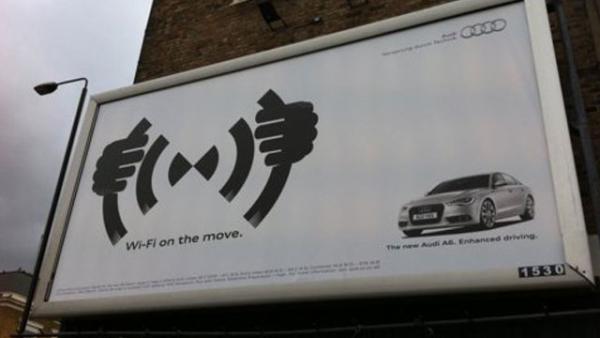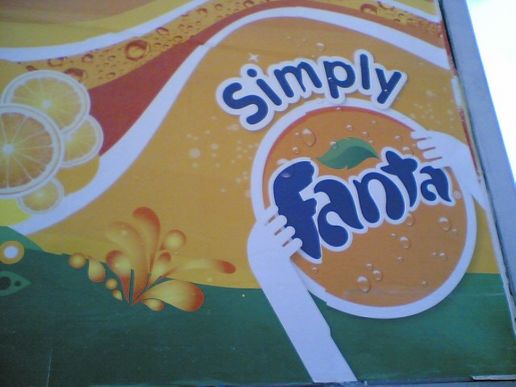DSG's piece on how obscene internet references are used by some workers as sabotage or resistance.

This short article is not for the faint of heart. It’s not for internet dabblers, or the recently-fed. Or maybe it is- maybe this article will give some insight into the world of the digital natives. It aims to shed light on an internet phenomenon, in turn giving the shadow, depth and form of class-struggle to what might, on first appearances, seem like a decidedly two-dimensional case study. Here, we wish to talk about a meme called Goatse, and the story of how a revolting and childish prank spread to become a modern-day “sabot”, a memetic tool for workers to undermine their employers, and with it, the ideology of work.
Goatse (usually pronounced Goat-See) is an internet meme that emerged in the late 1990’s, and is a good case study for how memes transfer through populations, shifting forms and emptying themselves of content as they go (something we talk about in more depth in our chapter for the forthcoming “20 Reasons” book). The original Goatse image, cunningly entitled “hello.jpg”, was hosted at Goatse.cx –.cx being the top-level domain for Christmas Island. It constituted a shock site, akin to the later phenomenon of “rickrolling”, where a link with a disguised URL is posted onto a forum or social media site under a false pretext. In a “rick roll” the unwitting victim clicks the link, and is redirected to the youtube clip, “Rick Roll’d”, of Rick Astley singing his 1987 hit “Never Gonna Give You Up”. This false link has become one of the most popular and enduring memes and “Rick Roll’d” has been viewed almost 50 million times as of writing.
Goatse was a similar “bait and switch” prank, but involved being redirected to the (arguably) more disturbing site of a middle-aged man using both hands to pull apart his dilated rectum remarkably wide, revealing to the poor victim the depths of the man’s guts. On his left hand,a gold ring; a touching detail. It’s a remarkably foul example of the murkier undercurrents of online fora, and visible here, if you’re that type of person.
So why are we raising this spectre, this perverse underbelly of networked technology? We’re raising it because Goatse is a prime example of the meme-form, and its memetic transference has interesting knock-on implications for the design industry in general, and the critical undermining of that industry through its workers specifically.
One of the interesting developments of the internet meme-as-subject (that is, a self-aware and self-reflexive subject, rather than a metaphor for information transfer, as originally posited by Richard Dawkins) is its ability to retain its unique identity even when its form changes, or its content, or even both. Only the minimum trace of the original joke needs to remain- or no trace at all, as long as those in on the joke can trace back the heritage of the joke to the original. And so it is with Goatse- indeed, losing the “shock” factor has spread the Goatse meme far beyond its original parameters. Whilst the original “switch and bait” meme survives, running concurrently with it is a meme which functions in almost a polar opposite form. In this, graphical representations of the original image are inserted into (or spotted in) everyday commercial design. Rather than being a surprise image of such stark realness that everyone is forced into a visceral reaction on first meeting with the image, instead the image works as an in-joke IRL amongst those who consider themselves digital natives– people who operate in cyberspace as a singular territory in-and-of itself (rather than a sphere attached to the “real world”).

Examples of Goatses proliferate- some subtle, some blatant. Some can be put down to “accident”– a reading backwards of the meme. But we are more concerned with the more common occurrence– the intentional Goatse, slipped in surreptitiously to the advertising image with a wink and a nod to those who “get it”, and passing a reference to extreme rectal stretching under the noses of the paymasters.
The ability for this “in-joke” representation to appear within mainstream advertising and commercial image production relies upon two developments within postfordist capitalism: technological development and the proletarianisation of the creative industries. The first point is obvious– the development of cyberspace as a territory of virtual community, and the development of digital imaging hardware/software, has created a means of recording and disseminating chance observations of advertising hoardings, online and offline material and chance observations. It has also created a relatively lawless, anonymous environment where pornographic and extreme material can be circulated without fear of embarrassment.

This is the culture where the in-joke can breed, but this form of technological development comes hand-in-hand, fist-in-glove with new ways of organising the labour which produces this commercial cultural material in the first place; an atomised form of organising creative labour which has wholly changed the way graphic design works. It’s all very well creating the arena for subverted advertising to be passed around, but what was also needed was a particular disinvestment of cultural and creative workers, an alienation from the productive process whereby sabotage of their own creative output became more important than fulfilling the allotted task.
Within this environment the “in-joke” differs markedly to workplace in-jokes of the past. Today, you might be the only person in your office who gets the joke. But worldwide you’re connecting to thousands of others in a form of exploded solidarity. It’s a dynamic form, a vivid social relationship the marketeers can – for the time being – only dream of invoking with their cosy stock images of friends-coming-together, sharing a joke over a glass of chardonnay. The proletarian – especially within the present conditions, the info-prole – is a force who pushes forward innovation through her resistance to capital, and it is capital who exists on the back-foot, damming the flow of proletarian innovation, demanding enlarged logos in order to harness its power.

Here Goatse acts as a rejection of labour; and not just labour, but an ideology of post-fordist labour, where we are not simply selling labour-time, but selling ourselves, our creative and cognitive skills, as a product for an employer to buy. Perhaps here we can see Goatse as a morphing of the dialogic image. The dialogic image emerged as a strategy in the 1970s and 80s in the work of Dutch designer Jan van Toorn. The design presents multiple conflicting messages, with a view to forcing a demystified, critical reading from its audience. Here it is used in a positive form, influenced by Enzensberger’s theory of ‘emancipatory media’; it is considered, logical, a conscious and explicit criticality, aimed at heightening a social awareness of the constructed nature of the visual environment. A criticality negotiated between an autonomous, individual designer, an adventurous client, and a broad, undifferentiated public audience – a product of a social settlement already dead in the UK, now finally being destroyed in the Netherlands.
This settlement is long gone in Britain, used only as a bargaining chip or blackmail within industrial relations disputes. As our conditions of labour as cognitive workers have changed, morphed from the design studio to the atomised precarious freelancer, the ability to oversee a daring or critical design has been banished. Instead, we work as bees, each producing a tiny fragment of the whole. In this position as a worker, we cannot hold any critical control over the work we produce, just enact the formulations of other workers, the workers who piece together polls and focus groups, who brainstorm slogans or typefaces.
In this scenario, the dialogic image must be reduced to a short-hand: Goatse, the in-joke, provides that. Within Goatse, the dialogic image is covert; unable to exercise any significant level of authorial control within the design process, the designer forces the critical dissonance by tapping into the in-joke. Rather than a critical dialogue between worker and employer being an open one, it has become a secretive conflict; rather than a critical design image being a conscious attempt to demystify design as a mediated process, it becomes an attempt to undermine and destroy the design process. Adopting the supposedly most efficient working process for capital has pushed design to eat itself. The dialogic image has become the weaponisation of ridicule; the designer has become a postfordist saboteur of the industrial process, and the ever-present spectre of sabotage as the unspoken clot of class-war clogs another artery of capital.
Originally posted: September 27, 2011 at Deterritorial Support Group



Comments
Oh how I wish I could find
Oh how I wish I could find the NSPCC ad for sponsored runners that features the silhouette of pedobear.
Someting came up and wasn't
Someting came up and wasn't able to add all the hyperlinks. Will do later.
I still don't get the last
I still don't get the last image, what is the issue with it?
Does anyone else not think
Does anyone else not think this article is kinda pointless? DSG were at their best when they were dismantling leftist shibboleths (anti-fascism, student acolytes, the A to B march, etc)...
The thing is Rick Astley's
The thing is Rick Astley's meme was probably started by those bastards anyway. I mean Rick Astley sold loads of those shit records thanks to that piece of crap, which is shit. Propagation of shit music is a crime against humanity. Anyway yeah, not keen on this piece at all.
Caiman del Barrio wrote: Does
Caiman del Barrio
I think it's good, but then things like accounts of workplace organising activity or workers' sabotage are some of my favourite types of articles. This one from Processed World is similar:
http://libcom.org/library/technopranks-carving-out-message-electronic-space
Steven. wrote: I still don't
Steven.
Can someone please explain this!
I don't think there is
I don't think there is anything to get, it certainly isn't hiding a goatse. It is a picture from Jan Van Toorn, who is referenced in the paragraph below, and is presumably an example of a 'dialogic' image.
Tian wrote: I don't think
Tian
ha ha okay that makes me feel better. I had been looking for a goatse!
This got posted up on a
This got posted up on a fairly nihilistic BMX forum that I go on. I'm pretty sure it was because of the potent political analysis.
redsdisease wrote: This got
redsdisease
Are BMXers known for being more nihilistic than normal? I had no idea; I'd have thought it was the opposite. I live a sheltered life.
More relevantly, DSG and Adbusters and this whole scene, while occasionally able to raise a smile, are fairly lame means of sabotage imho. Too subtle, whiffs of elitism, and much too fucking clever for its own good. Just draw a big bunch of cocks or similar. You don't have to be a /b/ dweller to get that message.
Is this one too, or do I just
Is this one too, or do I just spend too much time on the internet?
http://www.theguardian.com/ar
http://www.theguardian.com/artanddesign/2016/may/12/turner-prize-shortlist-anthea-hamilton-michael-dean-helen-marten-josephine-pryde
Season's greetings
Season's greetings

Joseph Kay wrote: Season's
Joseph Kay
dear me.
What's that even pretending to be?!
I think it's a pair of
I think it's a pair of mittens.